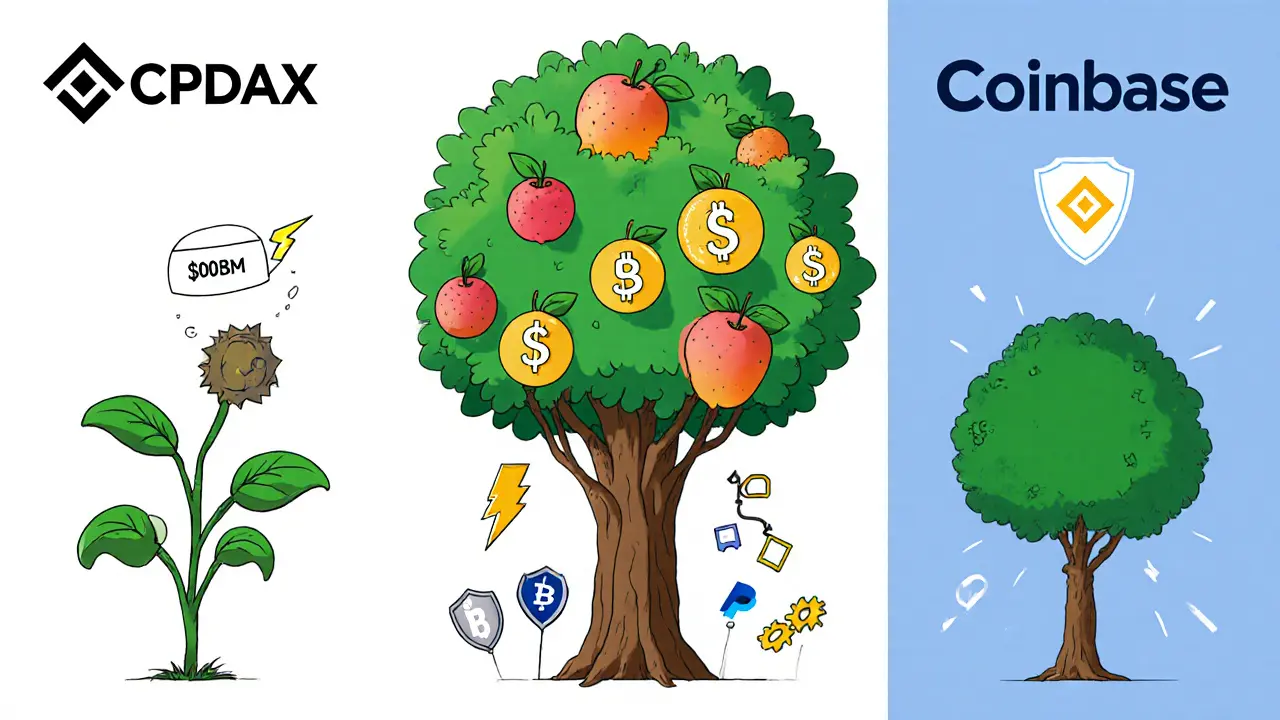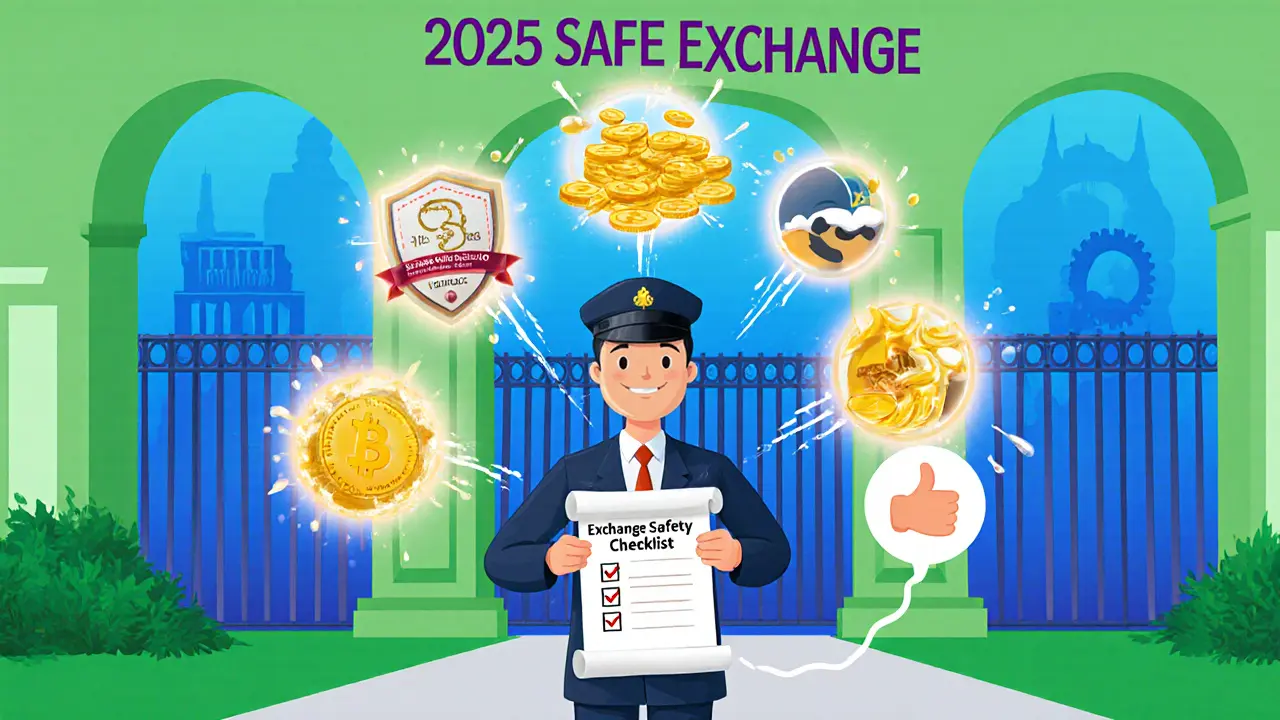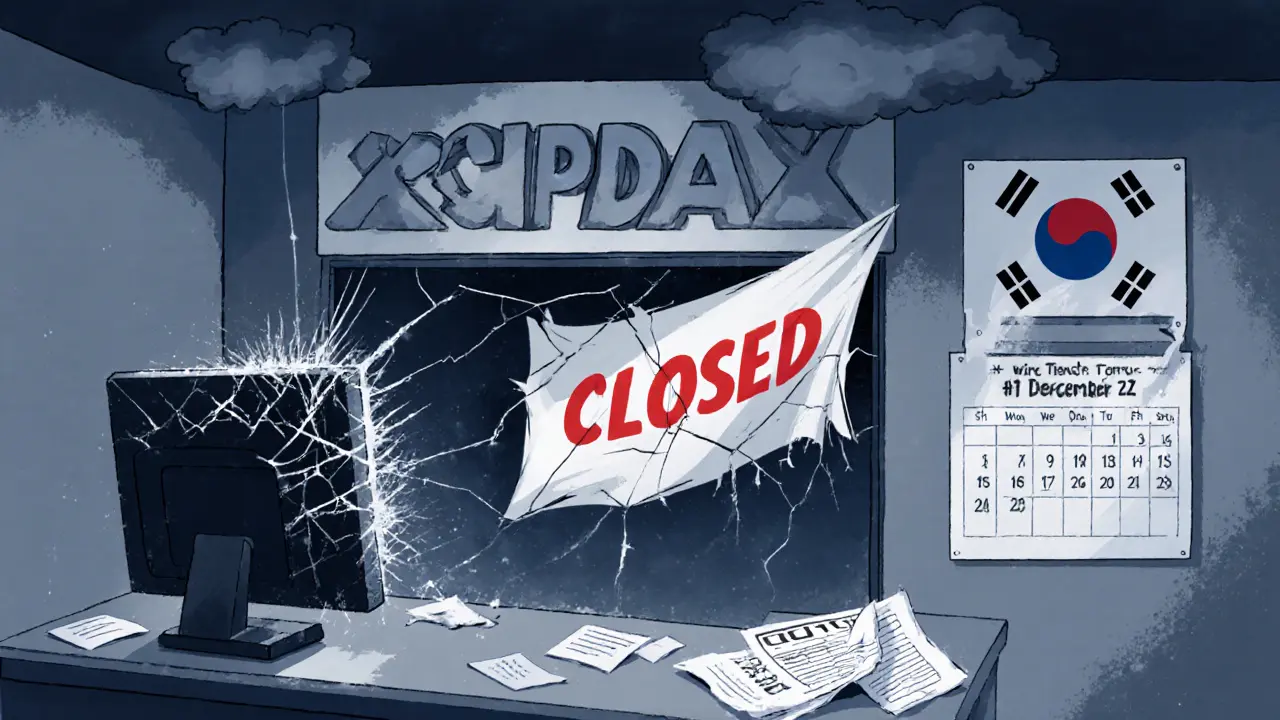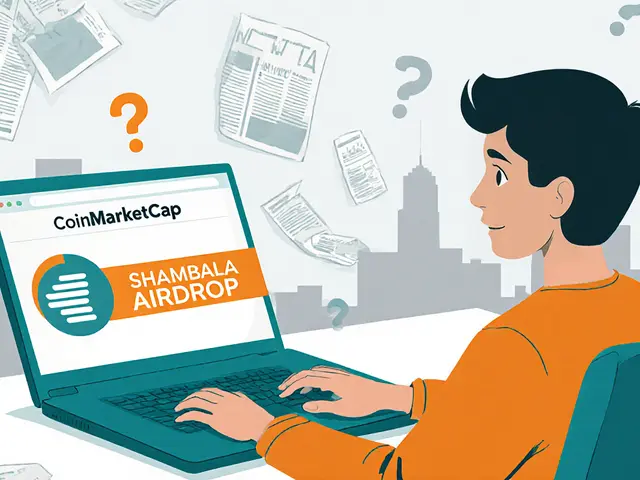Exchange Safety Checker
Safety Analysis Results
Comparison with CPDAX
When you hear the name CPDAX crypto exchange review, the first thing you’ll notice is that the platform has been offline since 2020. It wasn’t a flash‑in‑the‑pan scam; it was a South Korean startup that tried to carve a niche in a crowded market, only to disappear amid regulatory headwinds and fierce competition. If you’re scouting exchanges for 2025, understanding why CPDAX failed can save you from repeating the same mistakes.
What Was CPDAX?
CPDAX is a defunct South Korean cryptocurrency exchange that operated from its launch until December 27, 2020. The platform marketed itself as a “trust‑based market formation” service, promising safety and straightforward virtual‑asset trading. At its peak, CPDAX listed roughly 30 cryptocurrencies across fewer than 30 trading pairs and accepted only wire transfers for deposits, deliberately excluding credit‑card funding.
How Did CPDAX Operate?
During its brief life, CPDAX followed the standard KYC (Know Your Customer) onboarding flow used by most regulated exchanges. Users had to submit identity documents before they could move funds via bank wire. The exchange did not offer margin or leveraged trading, which limited its appeal to casual investors rather than professional traders. Daily trading volume stayed in the low‑hundreds of thousands of dollars, a stark contrast to the billions handled by global players.
Why Did CPDAX Shut Down?
Two forces pushed CPDAX over the edge: regulatory uncertainty and competitive pressure. In 2020, South Korea tightened its oversight of crypto platforms, demanding stricter AML/KYC compliance and higher capital reserves. Smaller exchanges struggled to meet these new standards without deep pockets.
At the same time, users were flocking to larger, better‑funded services that offered more trading pairs, higher liquidity, and smoother deposit options. CPDAX’s lack of credit‑card deposits created friction that many traders could not tolerate. The combination of a thin order book, limited feature set, and a rapidly tightening regulatory climate meant the business model was no longer viable.

How Does CPDAX Stack Up Against Modern Exchanges?
To put the shortcomings into perspective, here’s a quick side‑by‑side look at CPDAX compared with two industry giants that are still thriving in 2025.
| Feature | CPDAX | Binance | Coinbase |
|---|---|---|---|
| Trading pairs | ~30 | >5,000 | ~200 |
| Daily volume (2020) | $0.3M | $30B | $12B |
| Margin/Leverage | No | Yes (up to 125×) | No (but offers staking) |
| Deposit methods | Wire transfer only | Bank, card, crypto, PayPal | Bank, card, crypto |
| User rating (Cryptogeek) | 1.0 / 5 | 4.8 / 5 | 4.5 / 5 |
The numbers tell a simple story: liquidity, feature breadth, and ease of funding matter. When you compare a dead platform with a live one that processes billions daily, the gap is obvious.
Key Takeaways for Choosing an Exchange in 2025
Every trader needs a quick checklist to avoid ending up on a graveyard list. Below are the five non‑negotiables most analysts-like Cryptowisser-recommend evaluating before you deposit a single cent.
- Regulatory compliance: Verify that the exchange holds a license in a jurisdiction with clear crypto rules (e.g., Malta, Singapore, US states).
- Liquidity & volume: Look for daily trading volume well above $100M for major pairs; low volume means slippage.
- Deposit & withdrawal flexibility: Card, bank, and crypto options reduce friction and speed up fund movement.
- Advanced features: Margin, futures, and staking indicate a platform is keeping up with trader demand.
- Community reputation: Check recent reviews on sites like Cryptogeek and Revain. Persistent low scores are a red flag.
What Modern Platforms Offer That CPDAX Lacked
While CPDAX was stuck with a minimal feature set, 2025’s leading exchanges-such as dYdX and Hyperliquid-bring in‑depth derivatives markets, built‑in insurance funds, and robust API access for algorithmic traders. Even decentralized exchanges (DEXs) now provide near‑instant settlement without custodial risk, a compelling alternative for users wary of centralized failures.
Practical Steps If You Still Have Funds Locked on a Closed Platform
Although CPDAX’s servers are offline, the closure process reportedly asked users to withdraw assets before the final shutdown date. If you ever find yourself in a similar situation, follow these best‑practice steps:
- Check any official email communication for withdrawal deadlines.
- Move funds to a reputable exchange that supports the same assets.
- Document transaction IDs and take screenshots for future reference.
- Report the incident to local consumer protection agencies, especially if you suspect mishandling.
- Consider using a hardware wallet for long‑term storage to avoid exchange risk.

Frequently Asked Questions
Is CPDAX still operational?
No. CPDAX shut down on December 27, 2020 and its website has been offline ever since. It is listed as “dead” in most exchange databases.
Can I retrieve any remaining funds from CPDAX?
The exchange asked users to withdraw before the shutdown. If you missed that window, there is no official channel to retrieve assets, and you would need to explore legal avenues.
How does CPDAX’s user rating compare to other exchanges?
On Cryptogeek, CPDAX received a 1.0 out of 5, while major platforms like Binance and Coinbase score above 4.5. The low rating reflects poor liquidity, limited features, and a small user base.
What payment methods did CPDAX support?
Only wire transfers. Credit‑card deposits were not offered, which limited the speed and convenience of funding accounts.
Why should I care about CPDAX’s failure when choosing a 2025 exchange?
CPDAX illustrates how regulatory pressure, low liquidity, and limited features can quickly kill a platform. Modern exchanges that meet the checklist above are far less likely to disappear unexpectedly.












People Comments
When one examines the CPDAX saga, a cascade of regulatory, liquidity, and user‑experience failures becomes evident; indeed, the platform's demise reads like a cautionary tale for any fledgling exchange, replete with missed opportunities, over‑reliance on wire transfers, and an austere feature set. The Korean regulatory tightening of 2020 acted as a catalyst, amplifying already fragile foundations, and the limited trading pairs further eroded market depth. One might argue that a more diversified deposit infrastructure could have mitigated user attrition, yet CPDAX clung to a singular wire‑only model, thereby alienating a broader demographic. Moreover, the absence of margin or staking options placed it at a competitive disadvantage, especially as peers rolled out sophisticated products. In sum, the CPDAX narrative underscores the intertwined nature of compliance, liquidity, and innovation in the crypto exchange arena.
It is evident, upon rigorous examination, that CPDAX suffered a catastrophic failure due to a trifecta of regulatory non‑compliance, insufficient capital reserves, and an utter lack of market depth; such deficiencies render any exchange untenable in the modern crypto ecosystem.
CPDAX is a textbook example of why you should stick with big, American‑based platforms.
From a systems‑architectural perspective, CPDAX's operational model was fundamentally misaligned with the scalability requirements of high‑frequency crypto markets; the reliance on a monolithic wire‑transfer gateway introduced latency bottlenecks that are inimical to arbitrage opportunities. Furthermore, the platform's limited order‑book depth signified a paucity of market‑making incentives, thereby exacerbating slippage for institutional participants. The regulatory milieu in South Korea, characterized by stringent AML/KYC mandates and elevated capital adequacy thresholds, imposed additional compliance overhead that CPDAX was ill‑equipped to absorb. In contrast, Tier‑1 exchanges deploy multi‑layered custody solutions, integrating cold storage with real‑time hot‑wallet liquidity pools to balance security and performance. CPDAX's omission of such mechanisms resulted in a suboptimal risk‑adjusted return profile for its users. Additionally, the absence of advanced derivatives instruments-such as perpetual futures or options-curtailed revenue diversification, rendering the revenue model overly dependent on spot‑trading fees. The platform's UI/UX design further suffered from a lack of responsive design principles, impeding adoption on mobile devices, which now constitute over 60% of crypto trading volume globally. Moreover, the singular deposit vector (wire transfers) introduced a frictional cost measured in days, whereas competitors offered near‑instantaneous fiat on‑ramps via card processors and third‑party payment services. This disparity in fund accessibility directly impacted user churn rates, as evidenced by the platform's declining active user metrics in the months preceding its shutdown. Lastly, the governance framework lacked transparency; no public tokenomic disclosures or stakeholder voting mechanisms were instituted, which would have otherwise fostered community trust and decentralization. Collectively, these strategic oversights precipitated an operational implosion, validating the hypothesis that exchange resilience is predicated upon regulatory compliance, liquidity engineering, feature breadth, and user‑centric design.
Hey folks, great discussion! 🌟 Remember, every setback is a lesson-CPDAX showed us why diversified deposit options and solid licensing matter. If you’re building or choosing a platform, think long‑term security and community support. Keep learning, stay safe, and happy trading! 🚀
Wow, what a dramatic fall! The CPDAX story is like a tragic opera-once the curtains rose, the bass strings of regulation and liquidity played a dissonant chord. 🎭 If you love a good comeback, watch how newer exchanges incorporate insurance funds and multi‑chain bridges. 🎇 Stay sharp, traders!
CPDAX’s demise proves the only safe choice is sticking with home‑grown, patriotic platforms that prioritize national security and user sovereignty.
Honestly, the CPDAX fiasco was inevitable given its woeful lack of depth and almost comical adherence to outdated wire transfers. If you can’t adapt, you’re doomed.
Let’s keep the conversation constructive-learning from CPDAX helps us all choose more resilient platforms. Stay optimistic, do your research, and keep the crypto community thriving!
Interesting read! I’m curious about how newer DEXs address the custody risks that plagued CPDAX. 🤔 It seems the trend is moving toward non‑custodial solutions, which could be a game changer.
Nice overview, really helpful for anyone thinking about where to put their funds.
What a kaleidoscope of insights! The CPDAX story dazzles like a comet streaking across the crypto sky-bright, brief, and a reminder that only the most versatile exchanges survive. 🌈🚀
Seriously, if an exchange can’t handle basic wire deposits, it’s a joke-don’t waste your time on these dead‑weight platforms.